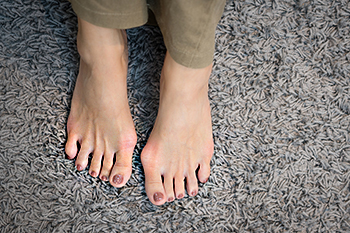
Bunions, a common foot condition, affect millions worldwide. Bunions occur when the joint at the base of the big toe becomes enlarged and protrudes outward. Often caused by genetics, foot stress, or from wearing improper footwear, bunions can lead to pain, swelling, and difficulty walking. Understanding the symptoms is essential in properly treating a bunion. Look for redness, inflammation, and a visible bump at the base of the big toe. While bunions may be managed with proper footwear and orthotics, severe cases may require surgery to realign the toe joint. Prevention is vital, and it is beneficial to opt for shoes with wide-toe boxes and low heels, in addition to avoiding shoes that are tight-fitting or pointed. Simple exercises like toe stretches and foot massages can also alleviate discomfort. Regular foot exams by a podiatrist can catch bunions early and prevent worsening. Bunions are manageable with proper care and attention. If you see a bunion developing, it is suggested that you confer with a podiatrist who can confirm the diagnosis, and offer appropriate relief and treatment methods.
If you are suffering from bunions, contact one of our podiatrists of Sayville Foot Care. Our doctors can provide the care you need to keep you pain-free and on your feet.
What Is a Bunion?
A bunion is formed of swollen tissue or an enlargement of boney growth, usually located at the base joint of the toe that connects to the foot. The swelling occurs due to the bones in the big toe shifting inward, which impacts the other toes of the foot. This causes the area around the base of the big toe to become inflamed and painful.
Why Do Bunions Form?
Genetics – Susceptibility to bunions are often hereditary
Stress on the feet – Poorly fitted and uncomfortable footwear that places stress on feet, such as heels, can worsen existing bunions
How Are Bunions Diagnosed?
Doctors often perform two tests – blood tests and x-rays – when trying to diagnose bunions, especially in the early stages of development. Blood tests help determine if the foot pain is being caused by something else, such as arthritis, while x-rays provide a clear picture of your bone structure to your doctor.
How Are Bunions Treated?
- Refrain from wearing heels or similar shoes that cause discomfort
- Select wider shoes that can provide more comfort and reduce pain
- Anti-inflammatory and pain management drugs
- Orthotics or foot inserts
- Surgery
If you have any questions, please feel free to contact our office located in Sayville, NY . We offer the newest diagnostic and treatment technologies for all your foot care needs.
